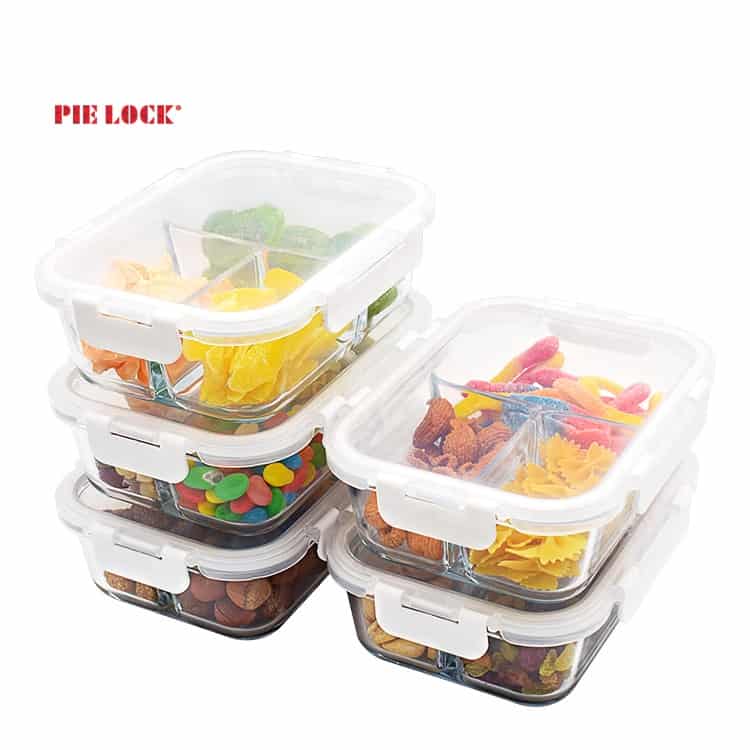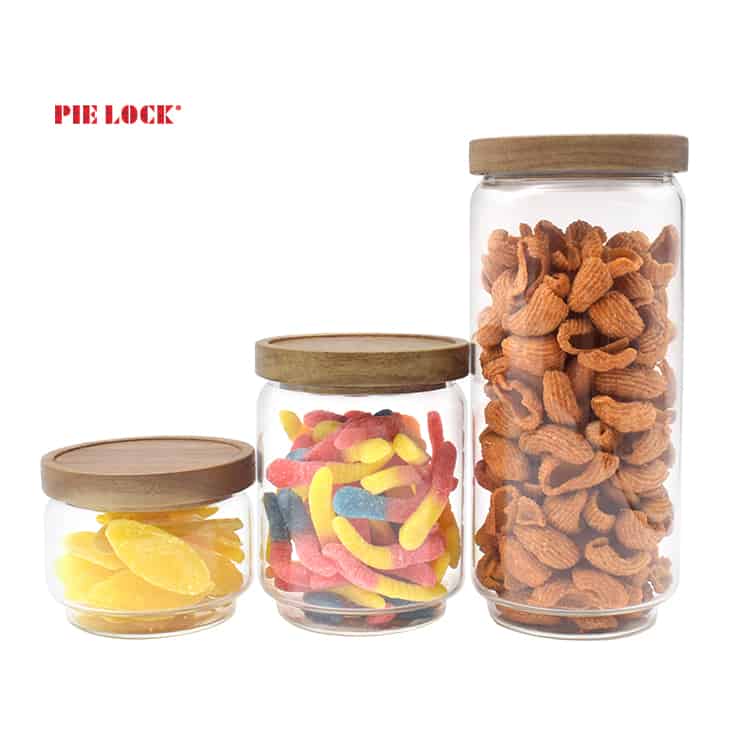There are many different types of materials that can be used for food packaging. Some common materials include plastic, metal, and glass. Each type of material has its benefits and drawbacks. For example, plastic is often cheaper than metal or glass, but it is not as environmentally friendly.
The benefits of glass packaging for food are endless. Glass is a sustainable material that is recyclable and can be made into different shapes and sizes. It also has a longer shelf life than plastic, which means it will not spoil as quickly. Glass is also more aesthetically pleasing than other materials, making it an appealing option for consumers.
Glass packaging for food provides many benefits to the environment and the people who are consuming the product. It is a more sustainable material that can be recycled and reused, meaning less waste in landfills. It also has a longer shelf life than plastic, which means there will be less spoilage in homes or restaurants. Glass packaging is also aesthetically pleasing to consumers, which makes it an appealing choice when shopping for food products.
What Is Glass Packaging
Glass packaging is a type of packaging that is made from glass. It is often used to store a variety of products, including foods, beverages and pharmaceuticals. Glass packaging is recyclable and does not contain any harmful chemicals.
Glass packaging has been popular for centuries and has been used in many different countries around the world. It is often considered to be a more environmentally friendly option than other types of food packaging, such as plastic or metal.
Glass containers are typically made from recycled glass and can be reused many times over before they need to be recycled again. This means that they are much less likely to end up in landfills than other types of food containers.
Glass packaging is a type of food packaging that is used for storing and preserving food products. Glass packaging can come in many shapes and sizes, but the most common form is the glass jar and container. A glass jar has a sealable lid on it that keeps the product fresh and preserves its taste.

The glass container is often used for storing items like jam, honey, vinegar or pickles because it can protect against contamination by microorganisms or insects. It also does not allow light to penetrate which means that it will not alter the taste of these foods.
Glass Packaging Examples
As the market continues to grow for sustainable and eco-friendly packaging options, glass is becoming an increasingly popular choice. Glass is a natural material that can be recycled endlessly without losing its quality. It‘s also100% recyclable.
Glass is a material that has been used for packaging food products for decades. Glass packaging is often used for storing high-quality and luxury food products. Glass packaging has been used for food products for a long time. It is one of the most popular materials for food packaging because it is durable and offers protection from outside forces.
These containers are often used to store jams, sauces, pastes, oils, vinegar, and other liquid foods. Glass containers are also used for chocolates and candies; these types of packages are usually made with clear glass so that customers can see what they are buying.
Glass can be made to be airtight, watertight, and light-resistant. This makes it a great choice when you want to protect the quality of your product. Glass packaging can also be made in any shape, size, or color you need which gives it an edge over other types of containers.
Advantages And Disadvantages Of Glass As Packaging Material
Glass is a popular choice for packaging due to its many benefits. It is clear, which allows consumers to see the product inside and it is also strong, which helps to protect the contents. Glass is also recyclable and does not leach chemicals into food or drinks, making it a safe and environmentally friendly option.
There are many benefits to using glass containers for food storage. Glass is non-porous, so it doesn’t absorb flavors or odors from food like plastic containers can. Glass is also dishwasher-safe and can be reused multiple times.
Glass is a good material for certain products. However, it has some disadvantages that people need to be aware of before they consider using it as a packaging material.
As the packaging material, glass can break easily and when it breaks, there are shards of glass everywhere. This can be dangerous for people who are handling the product or for anyone who encounters them.
For another, it is heavy and expensive to ship, which means more money will be spent on shipping costs and more fuel will be burned by the truck transporting the product.
Glass is an expensive material to use for packaging, and this makes it difficult for companies that need to keep prices low.
Types Of Glass Packaging Materials
Different types of packaging materials are available in the market. Glass is one of the most used packaging materials. It has many benefits over other materials. Glass is non-porous and does not absorb flavors or odors. This makes it ideal for storing food and beverages. Glass is also highly durable and can be reused multiple times. It is 100% recyclable and does not release harmful chemicals into the environment.
Borosilicate Glass: Borosilicate glass is a type of glass that has a higher melting point than other types of glass, such as soda-lime glass. It can withstand high-temperature environments and can also be used in cookware because it does not react with acidic foods or liquids.
Soda-Lime Glass: Soda-lime glass is one of the most common types of glasses that are used in food packaging. It has a lower melting point than borosilicate glasses, which makes it more susceptible to breakage and cracking if exposed to high temperatures.
Why Glass Is Used In Food Packaging
Glass is a material that can be found in many different places. It is used to make windows, drinking glasses, and even jewelry. But did you know that glass is also used in food packaging?
Glass is a great material for food packaging because it is non-porous and does not absorb flavors or smells. This means that your food will taste the same as it did when it was first packaged. Glass is also recyclable, so it is a good choice for those who are looking to reduce their environmental impact.
Glass is a material that has a long history of use in food packaging. It is durable, inert, and has a smooth surface that is easy to clean. Glass containers can be made in a variety of shapes and sizes, and can be used for both hot and cold foods.
Glass is a good choice for food packaging because it does not interact with food or beverages, and it will not absorb flavors or odors. Glass is also impermeable to oxygen and moisture, which helps to keep foods fresh. Glass containers can be recycled many times without losing quality, making them a sustainable option for food packaging.
When properly disposed of, glass can be broken down into its parts and reused indefinitely.
What Type Of Glass Is Used For Food Packaging
The most common type of glass used for food packaging is soda-lime glass. This type of glass is made from a mixture of sand, limestone, and soda ash. It is generally clear and has a slightly greenish tint. Soda-lime glass is used for food containers because it is strong and resists shattering. However, it is not as clear as other types of glass and can be more prone to scratching.
Borosilicate glass is a type of tempered glass that is often used for food packaging. This type of glass has a low coefficient of thermal expansion, which means it will not change shape or size when heated or cooled quickly.
It is used in the food packaging industry because it can withstand sudden temperature changes without shattering. Borosilicate Glass is also sometimes called Pyrex. It is the best material for food containers, as it is considered to be one of the safest and most durable.
Borosilicate glass is more expensive than other types of glass because it is made from boron oxide and silica, which are both more expensive than soda-lime and soda-lime-silica glasses.
The main difference between borosilicate and other types of glasses is their composition. Borosilicate glass contains boron oxide and silica while soda lime and soda-lime-silica glasses do not.
Soda-Lime Glass, also known as Soda-Lime-Silica Glass, has similar properties to Borosilicate Glass, but it isn’t as heat resistant as Borosilicate Glass. It’s not used in the food packaging industry because it can break if there are sudden temperature changes.
Final Touch
Many different materials can be used for food packaging, depending on the type of food and the desired shelf life.
Most people associate glass with fragile items because they know that it can easily break if dropped or mishandled. However, there are now many different types of glass that are more durable(high borosilicate glass) than ever before so this is no longer a concern.


